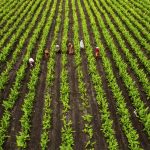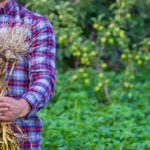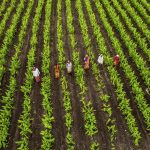In the agricultural sector, harvesting represents a pivotal phase that significantly impacts the overall yield and profitability of a farm. With advancements in technology and a growing understanding of effective methods, farmers can enhance their harvesting techniques to ensure a more efficient operation. This article will explore various strategies for optimizing harvesting, focusing on evaluating current methods, leveraging technology, training personnel, and measuring results for continuous improvement.
Assessing Current Harvesting Methods for Maximum Efficiency
The first step in optimizing your farm’s harvesting techniques is a thorough assessment of your current methods. This involves analyzing productivity rates, equipment usage, and labor efficiencies during the harvesting season. By collecting data on these parameters, farmers can identify bottlenecks and areas where time and resources are being wasted. For instance, if a specific crop is taking longer to harvest than expected, it may be necessary to evaluate the tools being used or the layout of the field.
In addition to evaluating productivity, assessing safety practices and equipment maintenance is crucial. A safe and well-maintained working environment directly correlates with efficiency and output. Regular inspections and maintenance schedules should be implemented to ensure that all harvesting equipment operates optimally. Moreover, understanding the strengths and weaknesses of each harvesting method allows farmers to make informed decisions about which practices to keep or optimize.
Finally, engaging with personnel who are directly involved in the harvesting process can yield valuable insights. Workers on the ground are often aware of inefficiencies that might not be immediately apparent to management. Conducting surveys or informal interviews can help to identify recurring issues and generate ideas for improvement. This collaborative approach fosters a culture of continuous improvement and encourages innovation within the team.
Implementing Technology for Precision Harvesting Techniques
The integration of technology in agriculture has revolutionized how farms approach harvesting. Precision harvesting techniques use data analytics, GPS, and sensors to improve efficiency and reduce waste. For instance, advanced harvesting machinery equipped with GPS technology can optimize routes within fields, ensuring that every inch is harvested without overlap or missed spots. This not only improves efficiency but also minimizes labor costs and fuel consumption.
Moreover, the adoption of drones and aerial imagery provides farmers with insights into crop health and yield potential before harvesting begins. By analyzing data such as plant height, color, and density, farmers can make better decisions about the right time to harvest, maximizing the quality and quantity of produce. This technology allows for a more tailored approach, ensuring that each crop is harvested at its peak.
Additionally, software solutions that track and analyze harvesting operations can help identify trends and areas for improvement. By using data to fine-tune methods, farmers can adapt their strategies to changing conditions, such as weather patterns or pest pressures. Embracing technology in the harvesting phase not only leads to better resource management but also equips farmers with the tools needed to respond dynamically to the challenges faced in modern agriculture.
Training Your Team: Best Practices in Harvesting Operations
Having the right equipment is only part of the equation; skilled personnel are vital to optimizing harvesting operations. Training your team in the best practices of harvesting can lead to significant improvements in efficiency and output. This includes hands-on training in the operation of machinery, as well as education on techniques that reduce waste and enhance productivity. Routine training sessions can help ensure that all workers are up to date with the latest methods and safety protocols.
Moreover, fostering a culture of teamwork and communication is essential for a successful harvesting operation. Establishing clear lines of communication among team members can help coordinate efforts and streamline processes. Regular meetings during the harvesting season can be beneficial for addressing issues as they arise, sharing tips, and celebrating successes. When team members feel they are part of a cohesive unit, they are more likely to be motivated and productive.
Lastly, feedback loops should be integrated into the training process. Encouraging workers to provide feedback on their experiences during harvesting can lead to improvements in techniques and operations. This participatory approach not only empowers the workforce but also allows for the continuous refinement of methods, leading to a more efficient and effective harvesting process in the long run.
Evaluating Results: Metrics for Continuous Improvement in Harvesting
To ensure that the optimization efforts are effective, it is crucial to establish metrics for evaluating harvesting results. Key performance indicators (KPIs) such as yield per acre, time taken to harvest, and labor costs should be regularly monitored. By analyzing these metrics, farmers can gain insights into the effectiveness of their harvesting methods and identify opportunities for further improvement.
In addition to traditional metrics, incorporating qualitative data such as worker feedback and customer satisfaction can provide a more holistic view of the harvesting process. For instance, if a certain crop is consistently rated highly by customers for quality, it may indicate that the harvesting technique employed is particularly effective. Conversely, if there are complaints regarding the freshness of the produce, it could signal a need for reevaluation of the harvesting time or methods used.
Finally, establishing a routine for evaluating results is essential for fostering a culture of continuous improvement. By regularly reviewing data and feedback, farmers can adapt their practices to changing conditions and implement new strategies that may enhance efficiency. This iterative process not only strengthens the overall operation but also prepares the farm to meet future challenges head-on.
Optimizing your farm’s harvesting techniques is an ongoing journey that requires careful assessment, technological integration, effective training, and consistent evaluation. By following these strategies, farmers can not only enhance efficiency and productivity but also ensure that they are well-equipped to adapt to the ever-evolving landscape of agriculture. As the industry continues to embrace innovation, those who prioritize harvesting optimization will stand to benefit the most in terms of yield and profitability.










